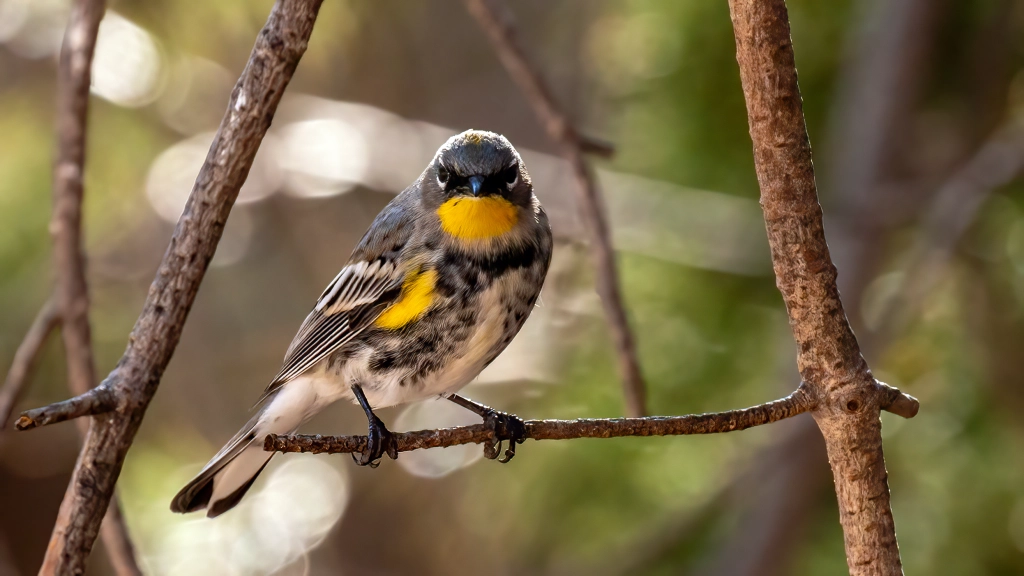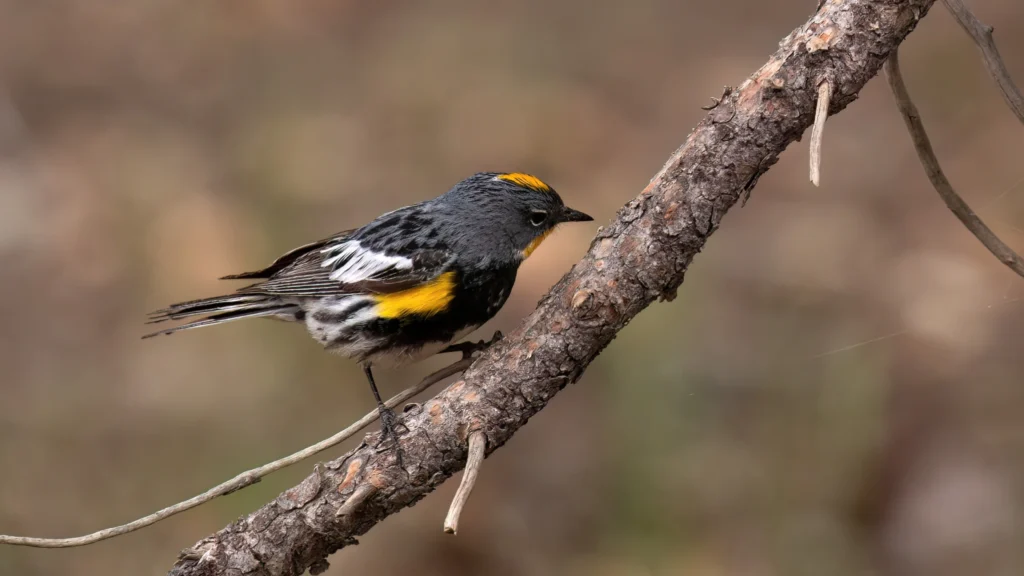Few things on earth fill us with as much delight as birds, and knowing them by name only adds to our pleasure. In California’s Central Valley, with only a little bit of effort, anyone can learn 100 local bird species. Valley residents almost daily come in contact with at least a dozen species that most recognize, but may not know the name of. Learning local birds is one of the most gratifying ways to connect with nature. See more of Jim Gain’s excursions into nature at Reflections of the Natural World.
What’s in a Name
Yellow-rumped Warbler – Setophaga coronata
Name Roots: (Gr. sētos moth; -phagos -eating; – L. coronata, “crowned”)
Physical Characteristics
With a length of around 5.5 inches, the Yellow-rumped Warbler is one of the larger warblers in the family Parulidae in Central California. The bird has a bright yellow patch on its rump and yellow on the sides. There are two main populations or subspecies, the locally common Audubon’s Yellow-rumped Warbler or the eastern variety, the Myrtle’s Yellow-rumped Warbler. Most “Audubon’s” have a yellow throat while the Myrtle’s have a white throat patch. During spring migration and the breeding season, they are blue-gray streaked with black above, with broken white eye-rings and a yellow spot on their crowns.

An Interesting or Unusual Fact
While most warbler species are considered Neotropical migrants, passing their non-breeding time in the tropics, the Yellow-rumped Warbler is one of a handful of warbler species that call California’s Central Valley “home” for the winter months.
DISTRIBUTION STATUS IN THE CENTRAL VALLEY
The Yellow-rumped Warbler is a common winter visitor in California’s Central Valley and can be found in your backyard and in almost any habitat with trees.


